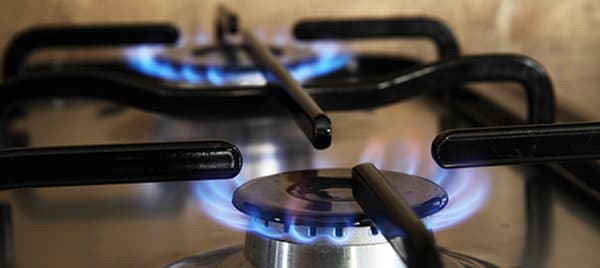Graham’s top ten FAQ’s on the Gas Appliance Regulation

With less than six months to go until the Gas Appliance Regulation (GAR) comes into force, I am finding certain questions are frequently cropping up. Below are some key pieces of information to keep you informed and guide you in your transition to the new regulation.
1) Does GAR apply to outdoor appliances?
Yes – so long as the outdoor appliances are being used for one of the specified activities listed in the GAR. The GAR applies to “appliances burning gaseous fuels used for cooking, refrigeration, air-conditioning, space heating, hot water production, lighting or washing, and also forced draught burners and heating bodies to be equipped with such burners”.
2) Is there guidance or a list within the regulations outlining what constitutes “foreseeable misuse”?
No – as part of the training we ran, BSI has provided many examples of what our experts think is foreseeable use (not ‘misuse’) but this has no official status. The term has to be taken to have its natural meaning and covers use that is outside the intended use of the product but which could be reasonably expected, based on our knowledge today.
3) Is a template for Risk analysis available and do we need to release the Risk Assessment document to customers on request?
No – every manufacturer is free to use whatever style of risk analysis that they are comfortable with and this doesn’t need to be presented to customers on request.
4) How do we control/certify products manufactured as spares after GAR is in force?
Spares are excluded from the scope of GAR, so they do not need to be certified. However, various general safety regulations may still require them to be “safe”, so manufacturers should still follow good design practice for spare parts, within the bounds of commercial practicality.
5) What will the GAR testing involve, who will be expected to do the testing and what should be in the design documentation?
The detail of testing needed will depend on the specific product(s) and the standard(s) that apply to it. Testing may be performed by any laboratory that is acceptable to the Notified Body – for example, BSI conducts testing in its own labs, in clients’ labs or in the labs of partner organisations around the world. The intent is to have a range of options that give maximum choice and flexibility to the client.
Requirements for design documentation can be found in GAR Annex II.
6) How would the GAR affect my company’s imports into the UK?
There are new duties and responsibilities for importers. Broadly, importers have to ensure that the manufacturer has followed the certification process correctly. If you are a UK importer and distributor of gas appliances sold under the original manufacturer’s brand you are classed as an “importer” so have responsibilities outlined in article 9 of the Regulation
7) What will be reviewed by the Notified Body for a GAR Certificate? Applicable reports – EMC, LVD, and Machinery? Any QMS requirements?
GAR compliance stands alone from all the other regulations that may or may not apply to a gas appliance or fitting. However, during Type Examination, the Notified Body will usually check evidence from related product regulations, as these may also help to satisfy GAR essential requirements.
Specifically:
- The LVD or RED helps show compliance with essential requirement 3.1.7
- The EMC Directive may help under essential requirement 3.1.8
- QMS issues are only related to the Surveillance required under GAR (module D or E)
8) What is the reason for certificate validity of 3 years versus 6 or 10 years?
Notified Bodies such as BSI have new responsibilities and duties over the whole life of a Type Examination certificate, to ensure that the product continues to meet the “state of the art”, and some of the ongoing cost of performing these duties has been included within the certification fees. Clearly, if a product is only intended to last three years, the client should not have to pay for ten years of service.
9) Does the GAR include industrial tools and appliances, and does it affect a flexible gas hose?
The GAR applies to “appliances burning gaseous fuels used for cooking, refrigeration, air-conditioning, space heating, hot water production, lighting or washing, and also forced draught burners and heating bodies to be equipped with such burners” - and this covers domestic and commercial uses. Industrial processes carried out on industrial premises and “tools” would not be covered.
With regards to flexible gas hoses, these are installation components and do not usually fall within the scope of GAR. If a hose was supplied factory-fitted to a gas appliance, or was being used within a gas appliance (to interconnect different parts) then it may be considered as a “fitting” and would need to have both GAR Type Examination and Surveillance certificates.
10) Who will be responsible for the “policing” of the industry?
Enforcement is a matter for each Member State. In the UK, we expect this to be managed by local trading standards for domestic products or HSE for commercial products
Remember we have a team of experts ready to assist you with any query or support you may need in ensuring your products remain compliant.
To find out more call us on +44 345 0765 606 or email product.certification@bsigroup.com

Author: Graham McKay
Global Head of Gas & Electrical Products



